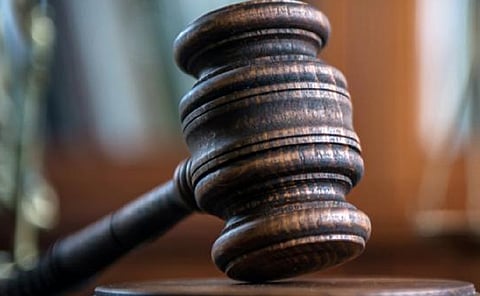

The Gauhati High Court on April 19, 2024 ordered Assam government to submit an affidavit detailing what actions the fishery department in Kamrup Metropolitan district has taken to implement the standard operating procedure (SOP) that restricts the use of formaldehyde in fishes.
On January 20, 2024, the state of Assam issued a notification with an SOP to limit the import, stock and sale of fishes brought in from states that are not self-sufficient. This SOP aims to restrict the use of formaldehyde to preserve fishes during transport by road or river to keep them in marketable condition for longer periods.
The affidavit must be submitted within three weeks, the court said, instructing that it should include the results of tests conducted by the nodal agencies designated under the January 20 SOP. The affidavit must also be sworn by the commissioner and secretary of the fishery department in Assam, with all relevant facts and figures.
The order was passed by the bench of Chief Justice Vijay Bishnoi and Justice Suman Shyam of the Gauhati High Court. The matter was next listed for hearing on May 13, 2024.
The petitioner claimed that the SOP contains numerous flaws and that there is a discrepancy in the inspections conducted by the State Public Health Laboratory, College of Fisheries, Gauhati University, Nagaon College, Dibrugarh University and fishery departmental officers at the district level in 2023.
While other agencies have found chemical formaldehyde in the fishes imported from other states, a fishery department survey found all the samples to be negative, said the petitioner, underlining the need for a report from an independent agency other than the state agency.
National Green Tribunal on April 19, 2024 directed states and union territories to file details of encroachment on protected forests, reserve forests, deemed forests, sanctuaries, protected areas, and any other type of forest.
Information should also be provided on the “percentage loss of forest area as of March 2024”, the court directed.
All states and UTs were directed to submit a copy of their responses to the Union Ministry of Environment, Forest and Climate Change (MoEF&CC) in addition to filing them with the tribunal. The secretary for MoEF&CC was told to compile the information received.
The matter related to large scale encroachment on the forest land across the country. The tribunal in the previous proceedings had taken note of the fact that in Assam, Arunachal Pradesh, Mizoram, Meghalaya, Tripura and Manipur, forest area under encroachment is as high as 56 per cent.
Water from Buddha Nullah, Ludhiana is unfit for irrigation due to parameters like coliform, chemical oxygen demand and biochemical oxygen demand, Punjab Pollution Control Board (PSPCB) told NGT in a status report.
The concentration of different parameters of water in the water samples collected from Buddha Nullah exceeded the prescribed standards for sewage treatment plants (STP), according to the report, which stated that all common effluent treatment plants (CEPT) are discharging their treated effluents into the water stream that leads to Sutlej river.
About 300 dyeing units operate in Ludhiana district, with approximately 265 units located in the catchment area of Buddha Nullah, which originates in Koom Kalan village in Ludhiana and runs parallel to the Sutlej on its south. The stream joins the river in Walipur Kalan village, also in Ludhiana.
Special purpose vehicles have installed three CETPs with a total capacity of 105 million litres a day have been installed at Ludhiana for treatment of wastewater of the dyeing industries.
Out of these units, 54 could not join the CETPs due to geographical reasons and scale of the industries. Further, of these 54 factories, a dozen are large scale, 16 are of small scale scattered at different places and 26 are situated at Industrial Area-A, Ludhiana.
All 54 dyeing units have their own captive effluent treatment plants to treat wastewater and discharge it into public sewers in accordance with MoEF&CC standards.
On January 4, 2024, NGT directed PSPCB to collect samples from various locations in Buddha Nullah, analyse them for quality in accordance with all parameters prescribed for the treatment of sewage/industrial effluents and submit a report.
The tribunal also directed the PSPCB and the Municipal Corporation of Ludhiana to file a status report on the action taken against non-compliant units, current status of closure, compliant status of all dyeing industries not connected to CETPs, status of dyeing industries in terms of groundwater withdrawal and utilisation, wastewater generated by dyeing industries, wastewater received in CETPs, production capacity and share in CETPs.